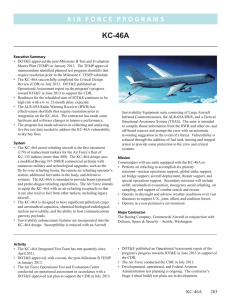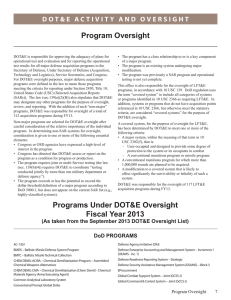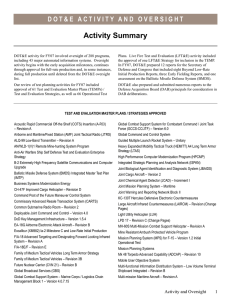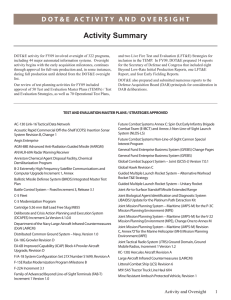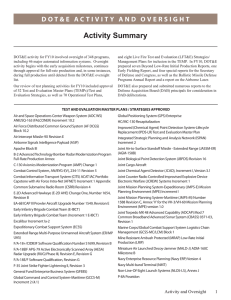Battle Control System – Mobile (BCS-M)
advertisement
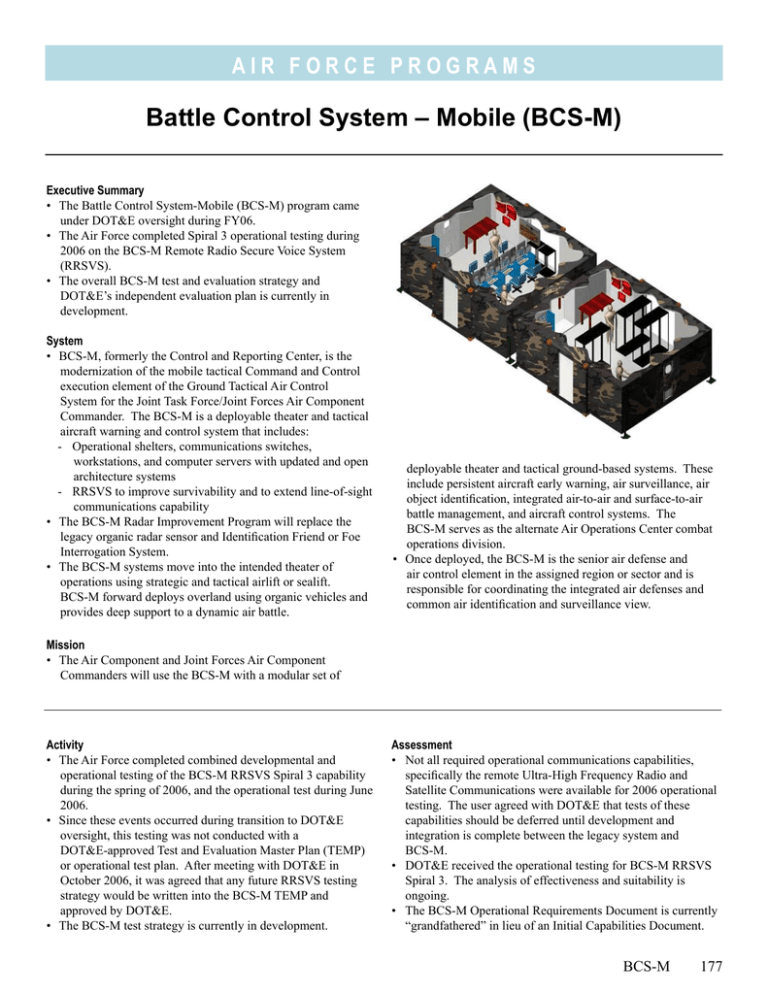
A i r F o r c e P RO G R A M S Battle Control System – Mobile (BCS-M) Executive Summary • The Battle Control System-Mobile (BCS-M) program came under DOT&E oversight during FY06. • The Air Force completed Spiral 3 operational testing during 2006 on the BCS-M Remote Radio Secure Voice System (RRSVS). • The overall BCS-M test and evaluation strategy and DOT&E’s independent evaluation plan is currently in development. System • BCS-M, formerly the Control and Reporting Center, is the modernization of the mobile tactical Command and Control execution element of the Ground Tactical Air Control System for the Joint Task Force/Joint Forces Air Component Commander. The BCS-M is a deployable theater and tactical aircraft warning and control system that includes: - Operational shelters, communications switches, workstations, and computer servers with updated and open architecture systems - RRSVS to improve survivability and to extend line-of-sight communications capability • The BCS-M Radar Improvement Program will replace the legacy organic radar sensor and Identification Friend or Foe Interrogation System. • The BCS-M systems move into the intended theater of operations using strategic and tactical airlift or sealift. BCS-M forward deploys overland using organic vehicles and provides deep support to a dynamic air battle. deployable theater and tactical ground-based systems. These include persistent aircraft early warning, air surveillance, air object identification, integrated air-to-air and surface-to-air battle management, and aircraft control systems. The BCS-M serves as the alternate Air Operations Center combat operations division. • Once deployed, the BCS-M is the senior air defense and air control element in the assigned region or sector and is responsible for coordinating the integrated air defenses and common air identification and surveillance view. Mission • The Air Component and Joint Forces Air Component Commanders will use the BCS-M with a modular set of Activity • The Air Force completed combined developmental and operational testing of the BCS-M RRSVS Spiral 3 capability during the spring of 2006, and the operational test during June 2006. • Since these events occurred during transition to DOT&E oversight, this testing was not conducted with a DOT&E-approved Test and Evaluation Master Plan (TEMP) or operational test plan. After meeting with DOT&E in October 2006, it was agreed that any future RRSVS testing strategy would be written into the BCS-M TEMP and approved by DOT&E. • The BCS-M test strategy is currently in development. Assessment • Not all required operational communications capabilities, specifically the remote Ultra-High Frequency Radio and Satellite Communications were available for 2006 operational testing. The user agreed with DOT&E that tests of these capabilities should be deferred until development and integration is complete between the legacy system and BCS-M. • DOT&E received the operational testing for BCS-M RRSVS Spiral 3. The analysis of effectiveness and suitability is ongoing. • The BCS-M Operational Requirements Document is currently “grandfathered” in lieu of an Initial Capabilities Document. BCS-M 177 A i r F o r c e P RO G R A M S The Capabilities Production Document is being developed, and will include any changes that may differ from the ORD. Recommendations • Status of Previous Recommendations. BCS-M was not on DOT&E oversight prior to this report. • FY06 Recommendations. The Air Force should: 1. Plan to conduct additional operational tests of BCS-M RRSVS Spiral 3 capability for those areas not evaluated 178 BSC-M during 2006 and to validate the fixes to other deficiencies indicated in the June 2006 test report. 2. Review the BCS-M Operational Requirements Document and staff a BCS-M Capabilities Production Document that includes the operational requirements emerging from the ongoing user and developer working groups, as well as those documented in the Systems Capabilities Description. 3. Develop an updated BCS-M TEMP for DOT&E approval that defines the test strategy for all BCS-M requirements.


